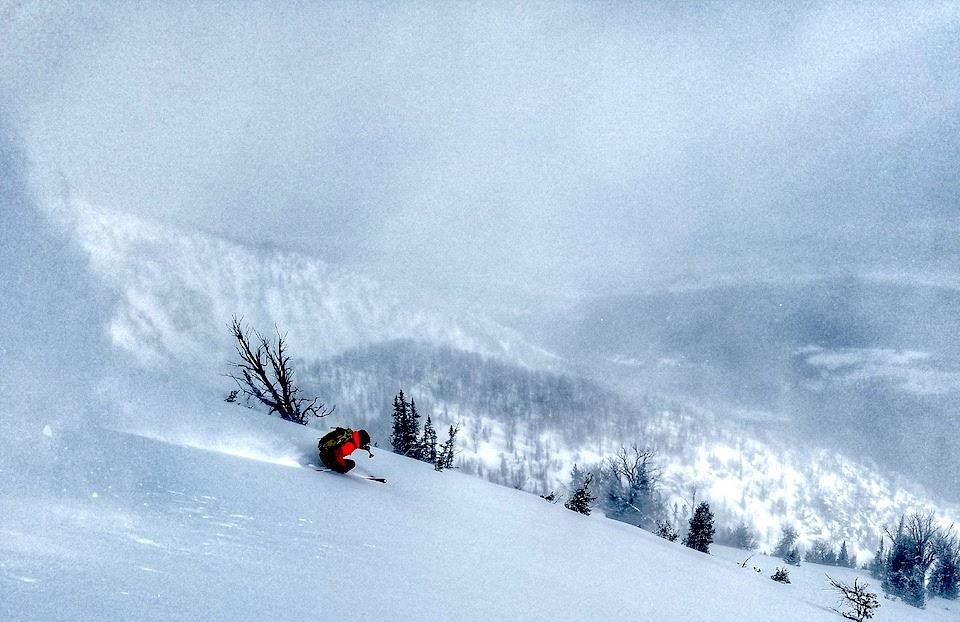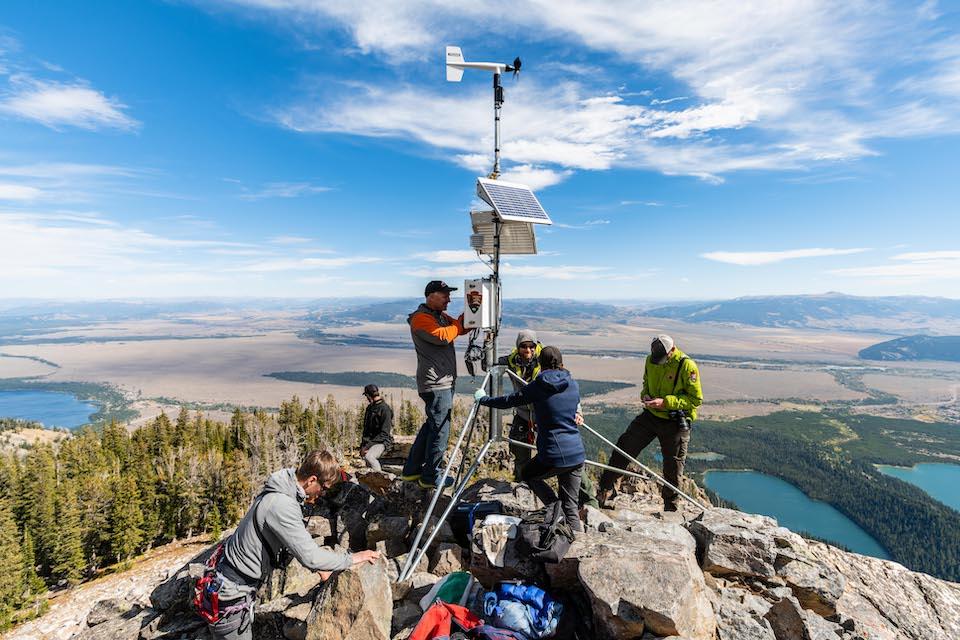
Backcountry skiing in Grand Teton National Park is a cherished endeavor / Aaron Diamond
Grand Teton National Park has been a well-known backcountry skiing destination prior to Bill Briggs’ first winter descent of the Grand in 1971. Today, skiers and snowboarders from across the globe travel to the park seeking powder turns in one of the most iconic mountain landscapes in the lower forty-eight.
The popularity of backcountry skiing has increased significantly during the last several years—a trend that is certainly evident in the Tetons.
Bridger-Teton National Forest’s Avalanche Center (BTAC) has been creating the daily Teton forecast for more than 40 years. Prior to this season, BTAC collected and analyzed weather data at various locations throughout the valley, but not in Grand Teton.
“Since the park is a significant portion of the forecast area, we wanted to collaborate with BTAC for the benefit and safety of park visitors,” Chief Jenny Lake Climbing Ranger Scott Guenther said. “With the help of Grand Teton National Park Foundation, we are able to partner with the avalanche center to provide much-needed remote weather stations located within popular skiing terrain in the park.”
Two stations—wind and snow—were installed in the Surprise Lake/Disappointment Peak region in late September. Data from these sensors will help inform the daily Teton avalanche forecast and be available on BTAC’s website (jhavalanche.org). This will give backcountry skiers and riders information about what is going on with the snowpack in Grand Teton.
In addition to offering more data, the Foundation is supporting a meteorological technician who will make snowpack assessments and observations throughout Grand Teton National Park. The technician will also collaborate with BTAC.
“These new resources will jump-start our effort to improve the daily avalanche hazard forecast for terrain located in Grand Teton National Park,” BTAC Director Bob Comey said. “It will allow the avalanche center to better inform the public, thus enabling park users to make smarter decisions regarding travel in avalanche terrain.”
Backcountry skiers and riders are going to continue to enjoy untouched powder fields and steep lines in Grand Teton National Park for years to come. With the addition of weather data and a meteorological technician, people will be able to make more informed decisions before they hit the skin track.
To learn more and support this effort, contact Maddy Johnson at 307-201-7660 or [email protected].

Weather stations installed in the park back in September should lead to more useful avalanche forecasts / NPS



Add comment